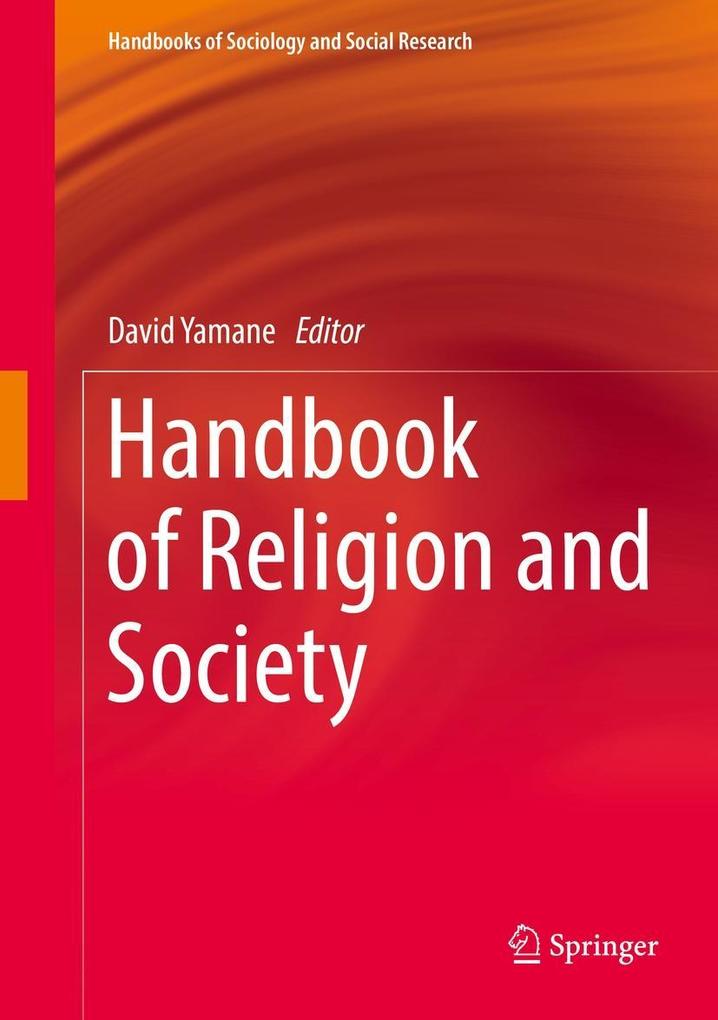
Sofort lieferbar (Download)
The Handbook of Religion and Society is the most comprehensive and up-to-date treatment of a vital force in the world today. It is an indispensable resource for scholars, students, policy makers, and other professionals seeking to understand the role of religion in society. This includes both the social forces that shape religion and the social consequences of religion.
This handbook captures the breadth and depth of contemporary work in the field, and shows readers important future directions for scholarship. Among the emerging topics covered in the handbook are biological functioning, organizational innovation, digital religion, spirituality, atheism, and transnationalism. The relationship of religion to other significant social institutions like work and entrepreneurship, science, and sport is also analyzed. Specific attention is paid, where appropriate, to international issues as well as to race, class, sexuality, and gender differences.
This handbook includes 27 chapters by a distinguished, diverse, and international collection of experts, organized into 6 major sections: religion and social institutions; religious organization; family, life course, and individual change; difference and inequality; political and legal processes; and globalization and transnationalism.
Inhaltsverzeichnis
Chapter 1. Introduction; David Yamane.- Part I. Religion and Social Institutions.- Chapter 2. Health and Biological Functioning; Terrence Hill, Matt Bradshaw and Amy Burdette.- Chapter 3. Work, Occupations, and Entrepreneurship; Jerry Z. Park, Kevin D. Dougherty and Mitchell J. Neubert.- Chapter 4. Science; Kathleen Oberlin.- Chapter 5. Sport; David Yamane.- Chapter 6. Education; David Sikkink and Jonathan Hill.- Chapter 7. Media; Stewart Hoover and Seung Soo Kim.- Part II. Religious Organization.- Chapter 8. Denominations, Congregations, and Special Purpose Groups; Nancy T. Ammerman.- Chapter 9. Organizational Innovation; Tricia Bruce and Josh Packard.- Chapter 10. Digital Religion; Christopher Helland.- Chapter 11. Spirituality; Giuseppe Giordan.- Part III. Family, Life Course, and Individual Change.- Chapter 12. Family; Kathleen Jenkins.- Chapter 13. Adolescence and Emerging Adulthood; Richard J. Petts and Scott A. Desmond.- Chapter 14. Aging; Neal Krause.- Chapter 15. Identity; Matthew T. Loveland.- Chapter 16. Nonreligion and Atheism; Ryan Cragun.- Chapter 17. Delinquency and Deviance; John P. Hoffmann, Stephen J. Bahr, and Michaela Huber.- Part IV. Difference and Inequality.- Chapter 18. Social Class; Philip Schwadel.- Chapter 19. Gender; Orit Avishai.- Chapter 20. Sexuality; Sarah-Jane Page and Heather Shipley.- Chapter 21. Race and Ethnicity; Todd Matthews, John P. Bartkowski and Tyrone Chase.- Part V. Political and Legal Processes.- Chapter 22. Comparative Politics; Jonathan Fox.- Chapter 23. Conflict and Peace; Isak Svensson.- Chapter 24. Law and Social Control; James T. Richardson.- Part V. Globalization and Transnationalism.- Chapter 25. Globalization; Victor Roudometof.- Chapter 26. Transnationalism; Stephen Offutt and Grant Miller.- Chapter 27. International Migration; Peter Kivisto, Augustana College.
Produktdetails
Erscheinungsdatum
15. Juli 2016
Sprache
englisch
Auflage
1st ed. 2016
Seitenanzahl
568
Dateigröße
8,68 MB
Reihe
Handbooks of Sociology and Social Research
Herausgegeben von
David Yamane
Verlag/Hersteller
Kopierschutz
mit Wasserzeichen versehen
Produktart
EBOOK
Dateiformat
PDF
ISBN
9783319313955
Entdecken Sie mehr
Pressestimmen
Editor Yamane has assembled the contributions of 26 authors who assess the state of current theory and research and expand the scope of the analysis of religion and society to include discussions of racial, ethnic, gender, and class diversity in a global context. An indispensable resource for undergraduates and advanced scholars who seek short, cogent essays that will introduce them to the subspecialties of the sociology of religion. Summing Up: Essential. All levels/libraries. (J. H. Rubin, Choice, Vol. 54 (5), January, 2017)
Bewertungen
0 Bewertungen
Es wurden noch keine Bewertungen abgegeben. Schreiben Sie die erste Bewertung zu "Handbook of Religion and Society" und helfen Sie damit anderen bei der Kaufentscheidung.










